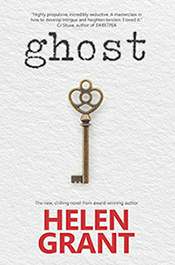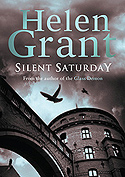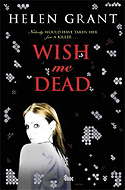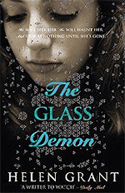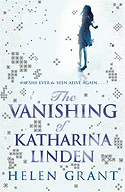I'm pleased to say that I made it back to Belgium, where we used to live, and where my most recent books are set, three times this year, which was a huge treat for me. I went over at Easter to see Flemish band Clouseau play at AB Brussel, again in September to hold launch events for my new book Demons of Ghent, and a third time in October for the British School of Brussels' Book Week. Like most people these days, I don't have a big budget (or even a budget at all!) for travel and accommodation so the fact that I was able to make these trips was largely due to the kindness of my German friend Gaby, who still lives in Belgium, and who ferried me about and offered me her guest bedroom. Gaby gets a well-deserved mention in the acknowledgments at the back of Demons of Ghent. A major highlight of my time in Flanders this year was taking a group of students from the British School of Brussels on a tour of the city of Ghent, and showing them the real life locations that appear in the book. I would gladly do this every day, if only someone would hire me to do it! It was great fun listening to the students discussing the practicalities of hiding inside the Gravensteen castle.
Demons of Ghent was my main published work of 2014, but I'm pleased to say that one of my short stories, The Third Time, appeared in the Ghosts and Scholars Book of Shadows Volume Two in September. Like the first Book of Shadows, this was an anthology of prequels and sequels of the ghost stories of M.R.James. The Third Time is a sequel to James' A Neighbour's Landmark, which is in my opinion one of his most underrated tales. Although the stories in the Book of Shadows anthologies must be related to the tales of M.R.James, there is no requirement to write them in a "Jamesian" literary style, nor to set them in the same period as his stories. The Third Time has a contemporary setting and I turned up the nastiness to a higher setting than James would have liked! The Book of Shadows Volume Two has now sold out and copies are changing hands at rather unaffordable prices on eBay and Amazon, however, if you would like to read The Third Time, I am delighted to say that it will be appearing in Best British Horror 2015 edited by Johnny Mains, and due out in April from Salt Publishing.
Also during 2014, I finished working on the third book in my Forbidden Spaces trilogy: Urban Legends, due out in March 2015. I have to admit to lingering somewhat over the final edits of the book, because it broke my heart to say goodbye to Veerle and Kris, the heroine and hero of the trilogy. Writing these books, urbex thrillers set in Flanders, has been some of the best fun I have ever had as a writer; the research was particularly exciting! I began by climbing the bell tower of a little village church in Flanders to research the very first scene of Silent Saturday, spent days exploring Ghent for Demons of Ghent, and visited a deserted industrial site with some seasoned urban explorers for Urban Legends. I also visited the Brussels sewers, which was an interesting if somewhat niffy experience! You'll have to read the book to find out what use I made of these adventures.
After finishing work on Urban Legends, I recently began work on a new novel. I'm not going to say anything about that at present other than that it is set in Scotland. As I've mentioned before on this blog, as a writer I am very influenced by setting, and when I'm on the lookout for ideas I often visit atmospheric places in the hopes of finding inspiration, a method I find to be pretty much infallible! So I've spent much of my spare time since we moved to Perthshire poking about in ancient castles, ruined churches and other interesting locations. I'm pleased to say that this has paid off!
As well as the new novel, I've also written a new short supernatural story, which will be appearing in Terror Tales of the Scottish Highlands, part of the excellent Terror Tales series of regionally-inspired supernatural anthologies edited by Paul Finch. I'll post details of where to get this book in due course.
As well as actually writing in 2014, I was delighted to be one of the Scottish Book Trust's Author Ambassadors for Book Week Scotland in November. I had some ambassadorial duties such as composing a love letter to my favourite library, but I also tried to lead by example by making and honouring two reading pledges. One of these was to read aloud to my family from the works of a Scots author every day in Book Week, and anyone who follows this blog will have read about the excerpts I chose. The other was to read Sir Walter Scott's Ivanhoe.
This brings me onto something else I wanted to mention in this 2014 round-up: my "books of the year". Ivanhoe was my absolutely top book of 2014; it was challenging to find time to do justice to Scott's early nineteenth century prose but it was well worth the effort. I've thought about Ivanhoe a great deal since reading it and I doubt I'm ever going to quite get past the marriage choice of the eponymous hero!
I'm not generally one to be put off by a book being "antique"; I love the works of Dickens, Trollope, etc. However, I had tried to read Ivanhoe when I was a teenager and had not managed to get past the jousting scene. For this reason, when I pledged to read the book I posted it on Goodreads, so that everyone would see my progress and I couldn't worm my way out of finishing it. In the event, the more I read of the book, the more I loved it. I shall certainly be reading more Scott in 2015!
As a YA writer, I naturally get to hear about other YA releases so I also read a few of those in 2014: The Fearless by Emma Pass, Bet Your Life by Jane Casey and Now You See Me by Emma Haughton were all really excellent.
Finally, I asked for Necropolis: London and its Dead by Catharine Arnold for Christmas after a recommendation from Twitter pal Paul Haine. This has turned out to be an utterly gripping read, for which I have forsaken several other books I had already started. There's nothing like a good book about burials!
Aside from strictly bookish things, I've spent more time exploring in 2014; I'm not sure you could call all of it "urbex" though, as many of the places I have visited have been in the countryside, such as the abandoned village of Tirai and the Glenfargs railway tunnels (pictured). I don't need to do any more urbex research now that Urban Legends is done and dusted, but I guess I've got the bug in a small way! I shan't be breaking into opulent expat houses in Brussels like my heroine Veerle, though, and hopefully I shan't run into any crossbow-wielding serial killers either...
There's one other thing I'd like to say about 2014, and that is: thank you. Thank you to the very kind friend (you know who you are!) who gave my daughter armloads of books and who also gave us a saxophone in beautiful condition for our musical son. Thank you to the former owners of the lovely Victorian piano on which my son is now also learning to play. Thanks again to Gaby and to all the friends in Belgium who came along to my book events this year. And a very, very big thank you to everyone who read my books, especially those who reviewed them, either on their blogs or on Amazon, Goodreads, etc. It is very, very much appreciated! Wishing you all an enjoyable end to 2014, and a very Happy New Year 2015!
Above: star treatment at the British School of Brussels! I'd share with my readers, though!











































.jpg)







